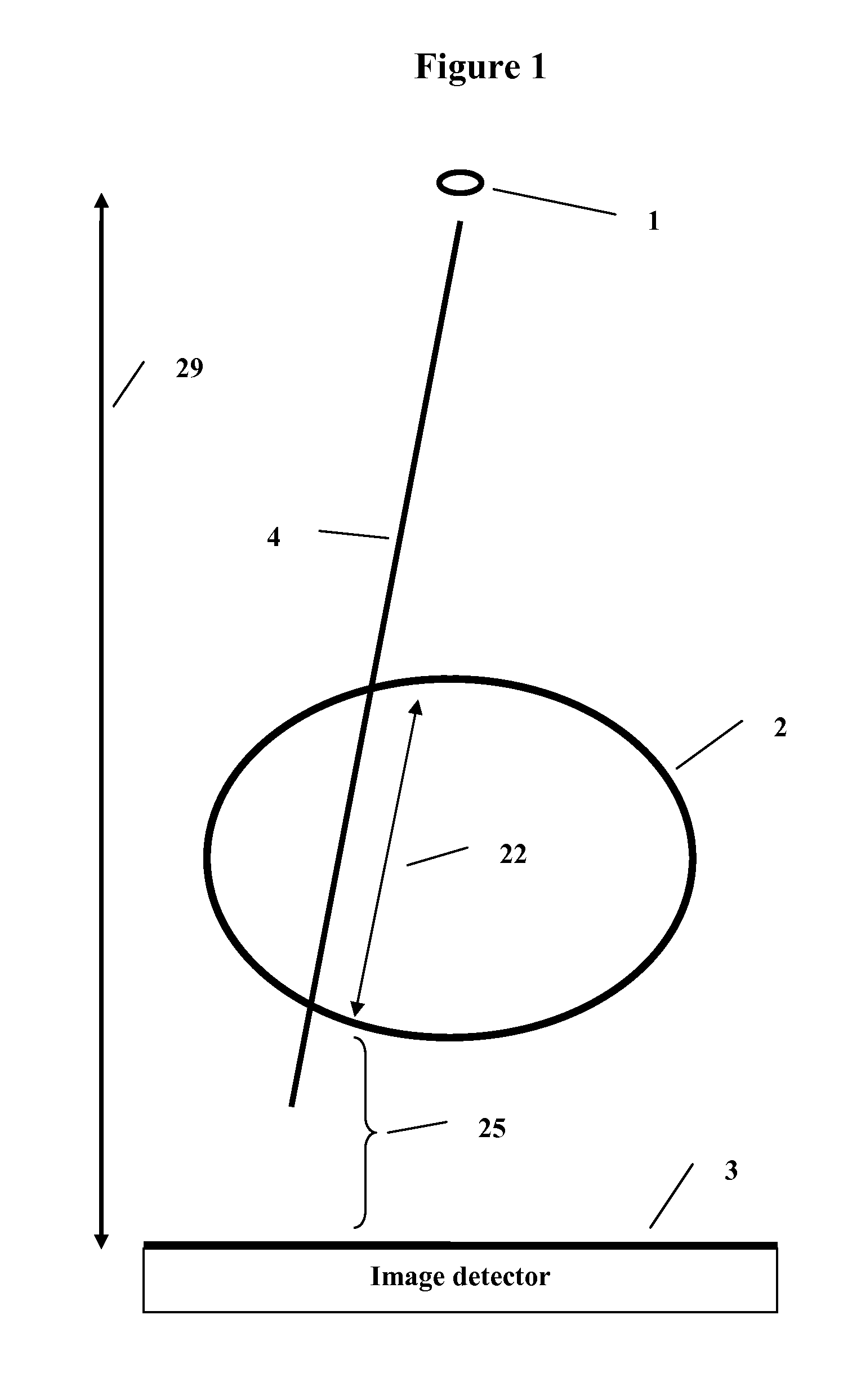Method and system to reconstruct treatment dose to a patient from integrated exit-transit images of radiation fields taken during treatment
a radiation field and integrated technology, applied in the field of radiation therapy, can solve the problems of not describing the method of reverse calculation, several problems not addressed, and the energy dependence of imaging devices
- Summary
- Abstract
- Description
- Claims
- Application Information
AI Technical Summary
Benefits of technology
Problems solved by technology
Method used
Image
Examples
example
Application to Clinical Exit Images
[0107]The data in this example includes images taken for a range of thickness, field size, and air gap. On a pixel by pixel basis, given particular values of the air gap distance (25) and thickness (22) at a pixel, and a field size to be defined below, a correction factor is interpolated from the corresponding three dimensional air gap correction table and applied to that pixel value.
[0108]Clinical images, however, are not typically of square open field sizes. They tend to comprise modulated fields. The field size used to look up the correction factor must be generated by a suitable metric that accounts for the amount of scatter generated in the patient from the radiation field in such manner that different size square fields will generate different amounts of scatter. For each field image, the maximum intensity is determined, and all other pixels are divided by that maximum value. The pixels are then summed and multiplied by the area per pixel. A ...
PUM
 Login to View More
Login to View More Abstract
Description
Claims
Application Information
 Login to View More
Login to View More - R&D
- Intellectual Property
- Life Sciences
- Materials
- Tech Scout
- Unparalleled Data Quality
- Higher Quality Content
- 60% Fewer Hallucinations
Browse by: Latest US Patents, China's latest patents, Technical Efficacy Thesaurus, Application Domain, Technology Topic, Popular Technical Reports.
© 2025 PatSnap. All rights reserved.Legal|Privacy policy|Modern Slavery Act Transparency Statement|Sitemap|About US| Contact US: help@patsnap.com



